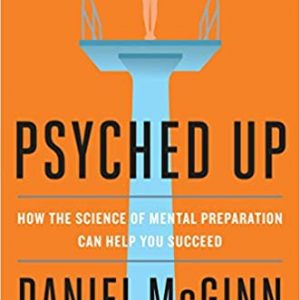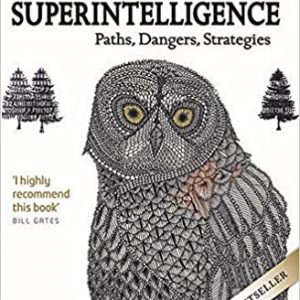1 Silicon Valley’s cold war with the EU heats up
At the beginning of 2019, as at the start of 2018, Margrethe Vestager remains the most powerful woman in tech. The EU competition commissioner has the world’s biggest companies walking on tiptoe, afraid of her habit of enforcing competition law where the US authorities have refused to do so.
In 2018, Google was the subject of Vestager’s cold gaze, receiving multibillion fines for its anti-competitive practices around its Android operating system, its shopping service and Chrome browser. But in 2019, it’s likely to be someone else’s turn. The only question is who.
In the US, Amazon has been the odds-on favourite, thanks to a combination of a hostile president, a direct negative effect on commercial competitors and the rise of the doctrine of “hipster antitrust” (broadly arguing that monopolies can be harmful even if consumer welfare appears to be boosted). But in the EU, with a greater focus on privacy and data protection issues, Facebook looks vulnerable.
The release by the UK parliament of internal Facebookemails appearing to show, among other things, Mark Zuckerberg authorising a hostile move to shut down access by Twitter’s video app Vine won’t endear the company to the competition commission. And, for many, Facebook still represents the great failure of competition commissions over the past 20 years, for rubber-stamping its acquisitions of Instagram and WhatsApp – two of its greatest potential competitors still in their infancy.
The powers of the EU are limited – it would take the US to break up Facebook– but another multibillion fine won’t go down well at the already troubled company.
2 The app stores begin to falter
It isn’t just Facebook that might be feeling the hot breath of a regulator on its neck. The EU’s ruling against Google’s dominance of the Android app store could be the first domino to fall in a sweeping change that will reshape the consumer technology industry.
Since the birth of the iPhone, a huge amount of digital commerce has been filtered through a few platforms, which have taken a hefty chunk of the revenue they handle. Apple takes 30% of app revenue, whether it be the purchase price of the software or the digital goods bought through it. Google, on Android, and Valve, for PC games, does similar. Each earns huge profits through being, essentially, the single point of entry for an industry.
Now that’s starting to wobble. Regulators are chipping away at one corner: Google’s aforementioned fine in the EU and a court case in the US accusing Apple of abusing its monopoly over the iOS app store show the unease governments have over that centralisation of power. At the other end, slowly, power is shifting through external causes. Epic Games, maker of Fortnite, has become one of the few publishers to rival the power of the platform owners themselves and it is wielding it effectively: launching a new app store for Android devices and another for PCs and offering to take a substantially lower cut of game revenues on both.
Not many brands have the following to pull off such a shift, but as many a parent will attest, Fortnite can move children where few others can.
3 The first driverless taxis won’t change the world
There are two schools of thought surrounding driverless cars. One is that the technology is 99.9% complete and that soon “level five” autonomy will be reached, meaning that cars can safely drive themselves in any situation. When that happens, the world will undergo rapid change, as driving jobs begin to disappear, urban spaces are reshaped and road travel becomes safer by the day.Advertisement
The other is that the final 0.1% is harder than all of the previous progress put together. And so we’ll remain, for years, with cars that work well enough to demonstrate, to put on the streets with safety drivers and continue being tested, funded and improved – but not quite well enough to actually build a business around.
Both views may be true. In the meantime, however, a 99.9% good enough car is good enough to run a taxi service – as Google is showing in Phoenix, where Waymo One, the company’s Uber competitor, is launching. What’s most interesting about the service is how… uninteresting it is. The taxis aren’t significantly cheaper than the competition; the journeys have the occasional glitch, as overcautious algorithms get stuck at T-junctions.
Maybe one day driverless cars will change the world, but not yet.
4 We can stop thinking about bitcoin
Only a fool would predict the death of bitcoin, let alone the wider industry it has spawned. The community has repeatedly shown an impressive capacity for survival against gigantic crashes, crippling hacks and severe legal roadblocks, and the nature of the blockchain is such that, if even one diehard is still mining bitcoin in an attic somewhere, it can never be said to be truly over.
But the price of bitcoin has been falling for months and now stands at a fifth of its all-time high. Ethereum, an even techier alternative, has fallen almost three times that. These prices are not only a vague reflection of the interest the wider world has in cryptocurrencies – at least in so far as they can be used as a speculative asset – but also a very real reduction in the amount of money knocking around the ecosystem, funding startups, paying salaries and subsidising customer acquisition.Advertisement
That means that the number of actually useful creations (as opposed to white papers, test networks, experimental trials or proofs of concept) to come out of the sector – a number already hovering somewhere in the region of zero – is likely to stay low for a while.
Maybe this will be the year that the industry puts its head down, starts putting substance over hype, and emerges in 2020 with something to show for more than a decade of speculation; or maybe this will be the year it slowly suffocates, deprived of the attention it needs to live. Either way, at least we can take a break.
5 Photography blurs with illustration
Smartphone innovation has stagnated in recent years; screens have got as good as they’re going to get, battery life is hitting the limits of physics and processors have become so fast that developers are already struggling to use all the power at their fingertips.Advertisement
But one of the last areas of competition is in the camera on the back of the phones. For Apple, that has meant moving to two lenses on the back of its top-end phones, investing in sapphire glass to minimise scratching and putting a hardware “neural engine” inside the phone to handle some of the more complicated elements of “computational photography” – using machine learning to manipulate images.
For Google, the approach has been entirely about software. Like Apple, it has focused heavily on computational photography, but it has taken it further than anyone else. Nowhere is this more evident than the stunning “night sight” feature released towards the end of 2018, which uses a neural network to brighten low-light shots, turning grainy, grey stills into stunningly bright and clear images.
But what’s most interesting about night sight is that the feature doesn’t just brighten images and reduce grain. It adds in detail that was never captured by the sensor in the first place, effectively “guessing” what the image would have looked like if it were better lit. It’s less photography and more computer-aided illustration, creating an artificial image based on reality that is more real than real. And that’s only going to intensify as other companies attempt to copy Google and Apple, or surpass them with their own features.
6 USB-C finally starts to make sense
In theory, the USB-C connector is better than its predecessor. The standard has some obvious physical benefits: a smaller plug that works in any orientation; the ability to transmit more power, more data and more standards; cables that can be used in either direction, across domains.
In practice, however, the transition has been exhausting. For one, there’s been the standard pain of chucking out cables, chargers and accessories built for a now obsolete format and replacing them slowly – and expensively – with new versions.
Also, USB-C’s flexibility has been a weakness, not a strength. Take Apple’s laptop line, for instance. If you have a MacBook with one USB-C port, that port can transmit data using the USB 3.0 protocol. If you have the latest MacBook Pro with four USB-C ports, those identical sockets can also transmit data using the Thunderbolt 3 protocol, a significantly higher-bandwidth system that can be used to power high-resolution external monitors and graphics cards. But if that MacBook Pro was bought in 2016 or 2017, only the two ports on the left side of the computer actually had full Thunderbolt 3 bandwidth. The two ports on the righthand side – again, visually identical – didn’t deliver full bandwidth.
Even the cables are baffling. Just because a piece of wire has a USB-C plug at each end doesn’t necessarily mean it can charge a device at full speed, let alone transfer data at maximum bandwidth.
Over 2019, these ridiculous situations will hopefully even out a bit, allowing the promise of “one cable to rule them all” finally to be met.
7 Another ‘I told you so’ moment for the worriers
It’s rare for world-changing technological events to come completely by surprise. In 2017, the WannaCry cyber-attack that shut down the NHS was largely foreseeable: it exploited a vulnerability that had been patched by Microsoft months earlier to combine an example of crypto-ransomware, first seen years earlier, with so-called “worm” mechanics that allowed it to self-propagate, first seen decades earlier.
But despite that, WannaCry changed the landscape permanently. Before, we all knew that a major malware attack could cause real-world harm; but Wannacry revealed that the “we” was a smaller group than it had thought, and what it “knew” was less useful than it had hoped.
Just last month, we saw another example of the same sort of unsurprising surprise, as a drone was used to shut down Gatwick airport for 24 hours. Again, the ingredients had been in place for years before – as had some of the tools necessary to prevent such an attack – but the chaos that ensued proved the difference between knowing a threat exists and internalising that threat to the degree that you build useful plans to tackle it.
This year will be the same. Some of the big events that subtly alter our understanding of how the world works won’t involve megadeaths and cataclysmic destruction. But they can still be horribly disruptive anyway.
Perhaps a massive botnet is used to overwhelm the servers of a supermarket’s logistics division. Or a cyber-attack on the maintenance department of a big US tanker firm paralyses petrol and water distribution across a huge swath of the American south-west. Or a vulnerability in a smart speaker lets an eager prankster wake up millions with 100dB sound at 2am.
The only thing we can be sure of is that, whatever it is, someone will be able to say “I told you so”.















